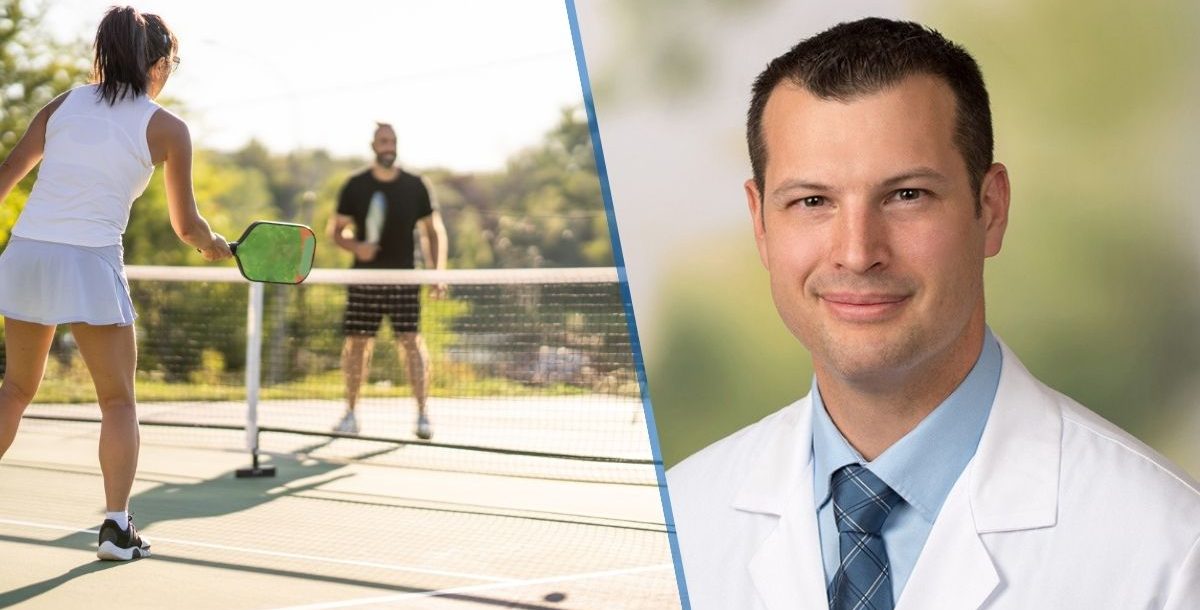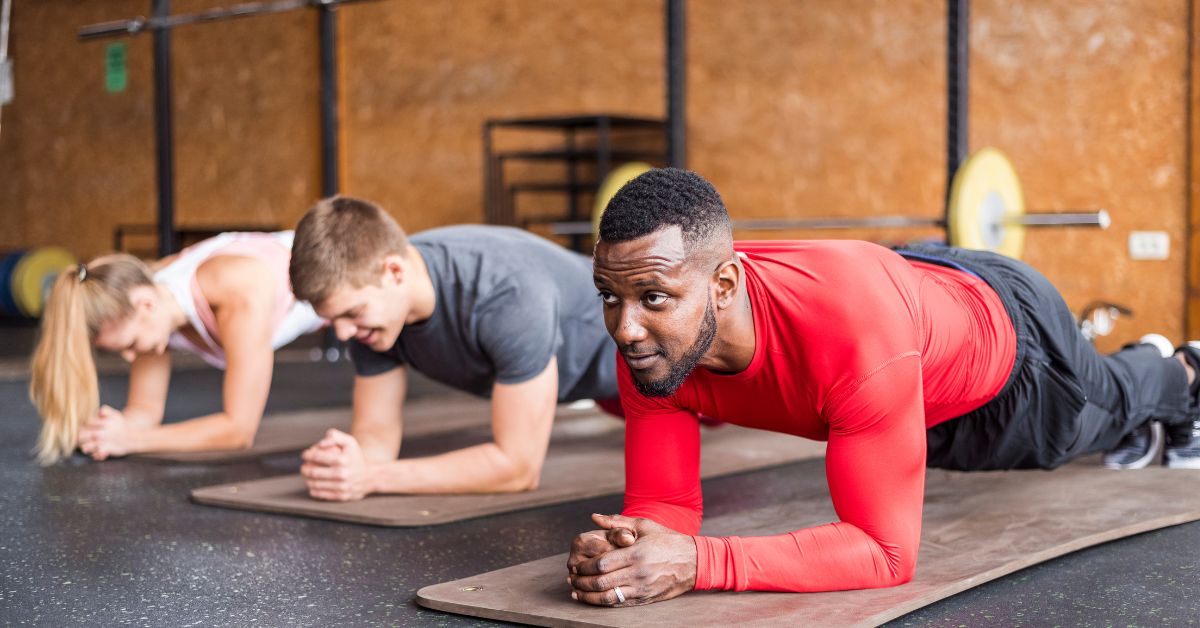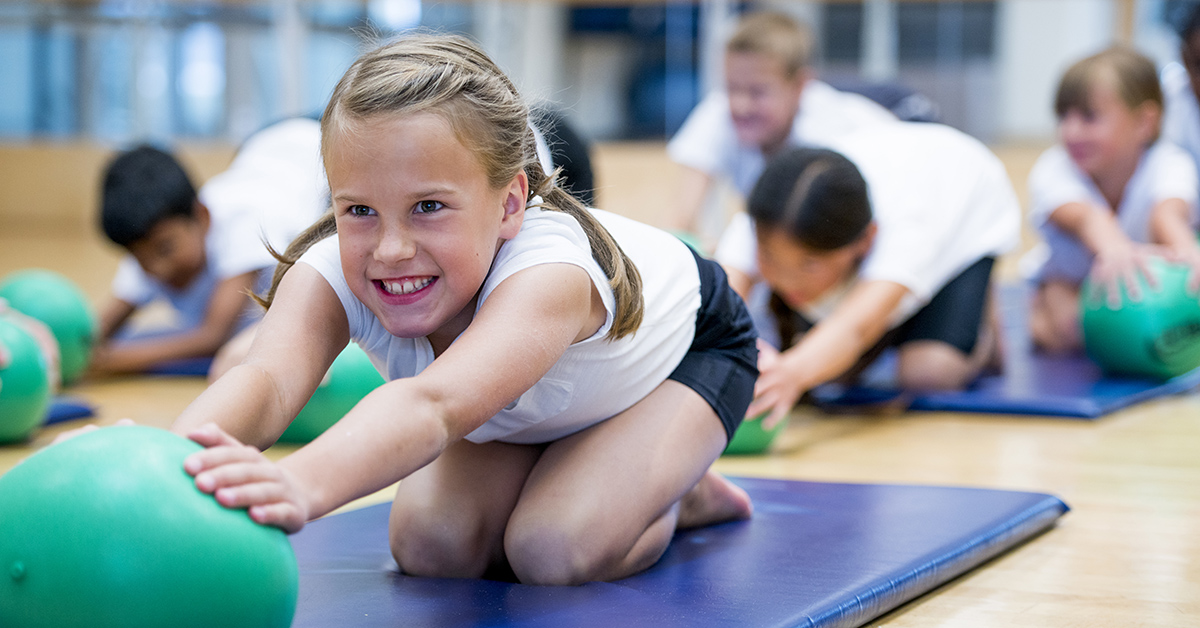To have fun and stay active, people of all ages have recently started to play pickleball. This blend of badminton, ping pong and tennis has become the most popular and fastest-growing sport in the country.
Although pickleball is easy to learn and not too strenuous, it’s still possible to get injured while playing this game.
“Even recreational sports can lead to significant bone and joint injuries,” Jacob Budny, MD, an orthopedic specialist in our Richmond market, shares. “So, be respectful of your body’s limitations and you will be able to enjoy your sport more, and for longer.”
Common pickleball injuries include:
- Ankle sprains
- An Achilles tendon strain
- Knee injuries
- Muscles strains, like the hamstring or heel
- Rotator cuff injuries, like a shoulder strain
- Tennis elbow, or lateral epicondylitis
- Wrist fracture
As you can see, pickleball injuries are similar to those of other racket sports. Knowing how to prevent pickleball injuries can make the game even more enjoyable. Take advantage of the following tips.
Choose the right shoes
Shoes can offer protection when playing many sports, and pickleball is no exception. Court shoes are made especially for pickleball or tennis court surfaces. They have rubber soles with good grip and a patterned tread that allows for quick, side-to-side movements. Avid pickleball players should replace their court shoes every six months.
Pick the right paddle
Pickleball paddles come in many shapes and sizes. The two features to consider for preventing injuries include weight and grip size.
To find the proper weight, consider that a heavier paddle offers more power, and a lighter paddle delivers more control. However, if you have tennis elbow, you should choose a medium-weight paddle. This is because a heavier paddle puts more strain on your joints, and a lighter paddle requires a harder swing.
Choosing a paddle with the right grip size can help reduce pickleball wrist pain. To find the right grip size, hold the paddle naturally. There should be a space between the heel of your hand and your fingers. When you have the right grip size, your index finger of your other hand should fit snugly into this space.
Get in shape
Before you start playing pickleball, it helps to be ready physically. You’ll have better performance while playing, and you’ll feel better afterward.
Good exercises to get you in shape for pickleball include:
- Walking, swimming or biking for cardiovascular fitness
- Strength training, like lunges and squats to build leg muscles
- Abdominal exercises to strengthen your core, like modified sit-ups and planks
- Yoga or tai chi for balance
- Stretching or Pilates for range of motion and mobility
Warm up properly
It’s important to warm up properly before playing pickleball to help prevent injury. This gets the blood pumping to your muscles and loosens your arms, legs, hips and back.
Start by walking briskly for about five minutes. Then, do some arm rolls, waist and neck twists, and gentle stretches to address any body parts that seem especially tight. Make sure stretches are dynamic. This means you’re moving in and out of the stretch and not holding it, which can tire your muscles before play.
Stay hydrated
Staying hydrated helps improve your performance when playing any sport. Dehydration, on the other hand, can make you lightheaded or dizzy, which can cause falls. Getting plenty of fluids requires a lot of water. Bring a large water bottle with you when you play pickleball and drink four to six ounces every 20 to 30 minutes.
If you’re playing outdoors on a hot day, sip on sports drinks with electrolytes. These are important minerals the body needs like sodium, calcium and potassium, which are lost through sweat. If needed, you can find many sugar-free sports drinks.
Take time to recover
Once you start playing pickleball, it’s likely you’ll get hooked. Although you may want to play it every day, it’s always a good idea to take a day or two off to recover, if needed. Recovery is particularly important when you’re just learning to play pickleball or if you’re coming back from an injury.
Theses tips should help you avoid common pickleball injuries!
Learn about the sports medicine services we provide at Bon Secours.





